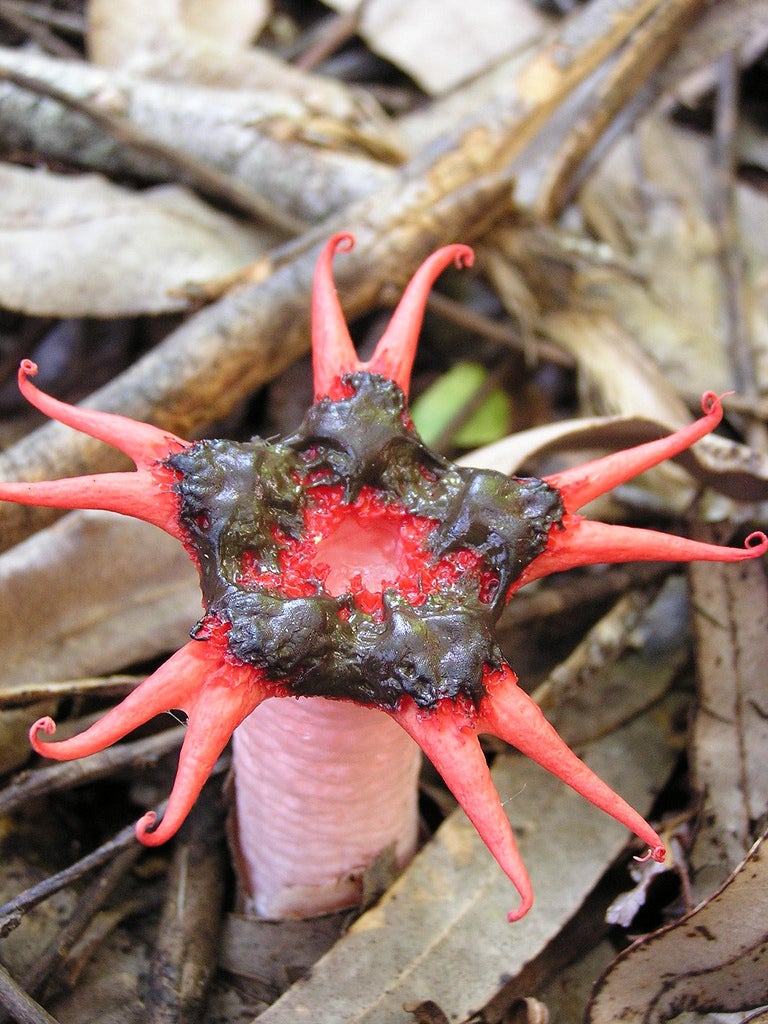What Are Stinkhorns: Tips For Removing Stinkhorn Fungi


What is that smell, and what are those odd looking red-orange things in the garden? If it smells like putrid rotting meat, you're probably dealing with stinkhorn mushrooms. There is no quick fix for the problem, but read on to find out about a few control measures you can try.
What are Stinkhorns?
Stinkhorn fungi are smelly, reddish orange mushrooms that may resemble a wiffle ball, an octopus, or a straight stem up to 8 inches (20 cm.) high. They don't harm plants or cause disease. In fact, plants benefit from the presence of stinkhorn mushrooms because they break down rotting material into a form plants can use for nourishment. If it weren't for their horrible smell, gardeners would welcome their brief visit in the garden. Stinkhorns emit their odor to attract flies. The fruiting bodies emerge from the egg sac covered with slimy, olive green coating, which contains the spores. The flies eat the spores and then distribute them over a wide area.
How to Get Rid of Stinkhorn Mushrooms
Stinkhorn fungus is seasonal and doesn't last very long. Given time the mushrooms will simply go away on their own, but many people find them so offensive that they aren't willing to wait. There are no chemicals or sprays that are effective at removing stinkhorn fungi. Once they appear, about the only thing you can do is close the windows and wait. There are, however, a few control measures that can help keep them from coming back. Stinkhorn mushrooms grow on rotting organic matter. Remove underground stumps, dead roots, and sawdust left from grinding stumps. The fungus also grows on decomposing hardwood mulch, so replace old hardwood mulch with pine needles, straw, or chopped leaves. You might also consider using live groundcovers instead of mulch. Stinkhorn fungus begins life as an underground, egg-shaped structure about the size of a golf ball. Dig up the eggs before they have a chance to produce fruiting bodies, which are the above ground part of the fungus. In many areas, they'll come back a couple of times a year unless you remove their food source, so mark the spot.
Sign up for the Gardening Know How newsletter today and receive a free copy of our e-book "How to Grow Delicious Tomatoes".

Jackie Carroll has written over 500 articles for Gardening Know How on a wide range of topics.